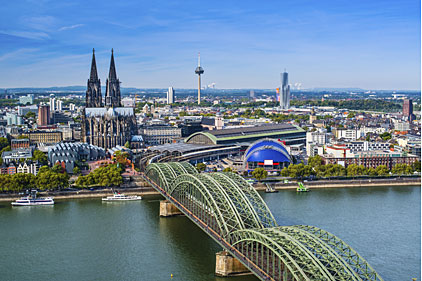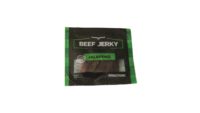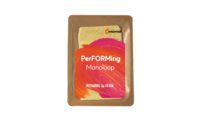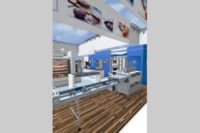Anuga FoodTec
Cologne, Germany
March 24-27, 2015
Meat, poultry, fish and sausage processing equipment and packaging will be on display in a number of the eight halls of the Anuga FoodTec fair taking place March 24-27, 2015, in Cologne, Germany. Held every three years, Anuga FoodTec is the only cross-industry expo to cover all aspects of food production. Whether machines or systems, packaging material and analytics, ingredients or services, the industry presents its innovations and technological visions at Anuga FoodTec.
Five exhibition segments of Anuga FoodTec — Food Processing, Food Packaging, Food Safety, Ingredients (new for 2015) and Services/Solutions — form one transparent information system for all areas of the industry and for all levels of resources. For the industry visitor, Anuga FoodTec encompasses all the synergies of a process-orientated production chain, from raw material to delivery-ready end product.
“Under the ‘One for All – All in One’ motto, Anuga FoodTec 2015 is intended to inspire the international food industry and launch a raft of new ideas taking the entire processing chain into account,” says Dietmar Eiden, head of division in trade fair management at Koelnmesse.
At the last edition in 2012, Anuga FoodTec drew a record-breaking 43,000 highly qualified trade visitors from 126 countries. Visitors grew by 27%, space by 21% and exhibitors by 10%. Current exhibit and space sales promise yet another record-breaker for the 2015 edition.
A technical program runs concurrently with the expo and numerous sessions are dedicated to meat processing. Topics include: hygienic designs for meat plants, modified-atmosphere packaging, texturization of animal proteins using high-moisture extrusion, continuous extrusion in sausage making, process innovations in continuous manufacture of meat products, ultraviolet disinfection of slicers and incorporating robotics. The latter will be a dominant theme throughout the expo, as automation and robotic technology continues to improve and become more sophisticated. Exhibitors will show how in the future, these “steel colleagues” of the food industry will be able to do more complex tasks than is the case today. The main driving force behind the use of robots is economical: the machines replace expensive human labor. Precision and hygienic safety are also positive qualities of robots.
“Automatic fine-cutting of pork requires very sophisticated sensor technology,” explains Dr. Knut Franke from the German Institute of Food Technologies in Quakenbrück. He and his team are developing algorithms for robot movements to enable automatic cutting of pieces of meat and contribute to a more efficient production of safer meat products in the future. Through the interaction of software, controller and mechanical systems, robots can pack almost any food today, and are especially useful in the meat industry.







Report Abusive Comment